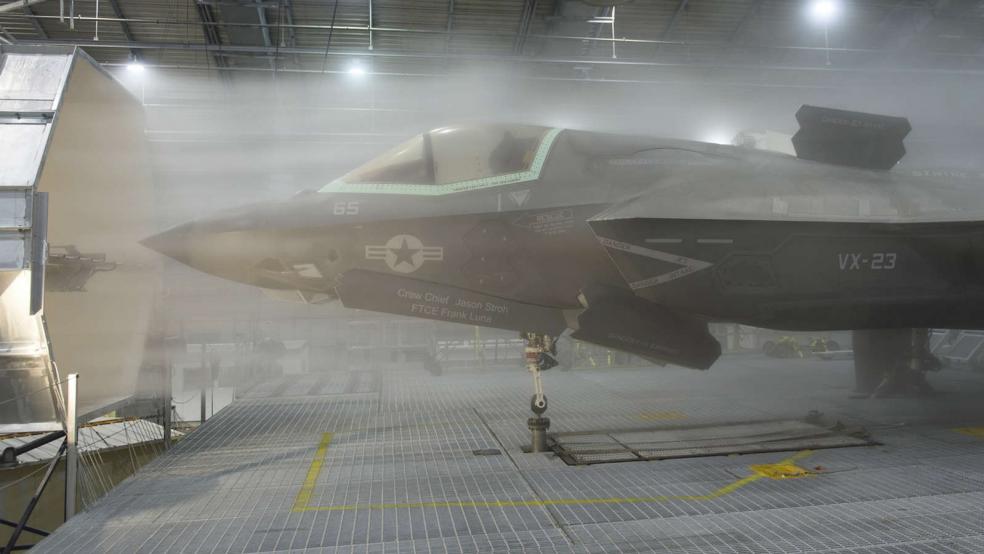Production for the F-35 Joint Strike Fighter could be up and running in 2019 -- for real this time.
Defense One reports that almost all of the pieces are in place at the Lockheed Martin factory that will take the lead role in building the next-generation fighter jet. The plane was supposed to be in full production by now – the original plan called for production to start in 2012 -- but is years behind schedule due to an expensive parade of developmental and technological setbacks.
Related: The F-35’s Billion-Dollar Brain Fails an IQ Test
By 2019 the factory in Texas should be producing 17 Joint Strike Fighters a month, quadruple the present rate. By comparison, the defense giant will turn out 53 warplanes in 2016 at two separate locations.
To date, the F-35 has cost taxpayers close to $400 billion, making it the most expensive weapons program in U.S. history. If the high-tech assembly line runs as planned, it could reduce overall production costs, bringing the price tag of each aircraft down from around $100 million to roughly $80 million.
Of course that assumes that everything with the F-35 program goes according to plan, which it rarely does.
For instance, pilots currently testing the aircraft at Edwards Air Force Base are having trouble booting up their jets about once out of every three flights, according to Defense News, making it clear that there are still serious problems with the F-35’s advanced software.
A Government Accountability Office report released last month raised new concerns about the jet's $16.7 billion Autonomic Logistics Information System (ALIS), the digital brain that enables the fifth-generation warplane to operate.
And while the jet’s roughly $400,000 pilot helmet recently enjoyed its first flight test, the equipment, like the F-35 itself, has been mired in developmental issues that are by no means settled.
Related: Why the F-35 May Not Be Combat-Ready Until 2022
The Defense Department plans for a total fleet of 2,457 F-35s for the Army, Navy and Marines, though some critics have questioned the need for such a large number. The New York Times editorial board recently argued that the Pentagon “can do with far fewer” than the number of aircraft the agency intends to buy.
The Marine Corps declared its version of the jet, the F-35B, ready for initial operations last year. The Air Force is expected to follow suit with the F-35A variant later this year and the Navy with the F-35C in 2018 or 2019.





